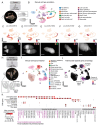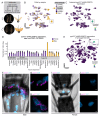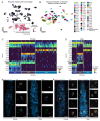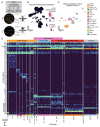This is a preprint.
A single-nucleus transcriptomic atlas of the adult Aedes aegypti mosquito
- PMID: 40060408
- PMCID: PMC11888250
- DOI: 10.1101/2025.02.25.639765
A single-nucleus transcriptomic atlas of the adult Aedes aegypti mosquito
Update in
-
A single-nucleus transcriptomic atlas of the adult Aedes aegypti mosquito.Cell. 2025 Oct 30:S0092-8674(25)01137-7. doi: 10.1016/j.cell.2025.10.008. Online ahead of print. Cell. 2025. PMID: 41172998
Abstract
The female Aedes aegypti mosquito's remarkable ability to hunt humans and transmit pathogens relies on her unique biology. Here, we present the Aedes aegypti Mosquito Cell Atlas, a comprehensive single-nucleus RNA sequencing dataset of more than 367,000 nuclei from 19 dissected tissues of adult female and male Aedes aegypti, providing cellular-level resolution of mosquito biology. We identify novel cell types and expand our understanding of sensory neuron organization of chemoreceptors to all sensory tissues. Our analysis uncovers male-specific cells and sexually dimorphic gene expression in the antenna and brain. In female mosquitoes, we find that glial cells in the brain, rather than neurons, undergo the most extensive transcriptional changes following blood feeding. Our findings provide insights into the cellular basis of mosquito behavior and sexual dimorphism. The Aedes aegypti Mosquito Cell Atlas resource enables systematic investigation of cell type-specific expression across all mosquito tissues.
Keywords: Aedes aegypti; cell atlas; mosquito; sexual dimorphism; snRNA-seq.
Conflict of interest statement
Declaration of Interests O.S.A. is a founder of Agragene, Inc. and Synvect, Inc., with equity interest. The terms of this arrangement have been reviewed and approved by the University of California, San Diego in accordance with its conflict of interest policies.
Figures







References
-
- World Health Organization ed. World malaria report 2024.
-
- Disease Outbreak News; Dengue - Global Situation (2024).
Publication types
Grants and funding
LinkOut - more resources
Full Text Sources
